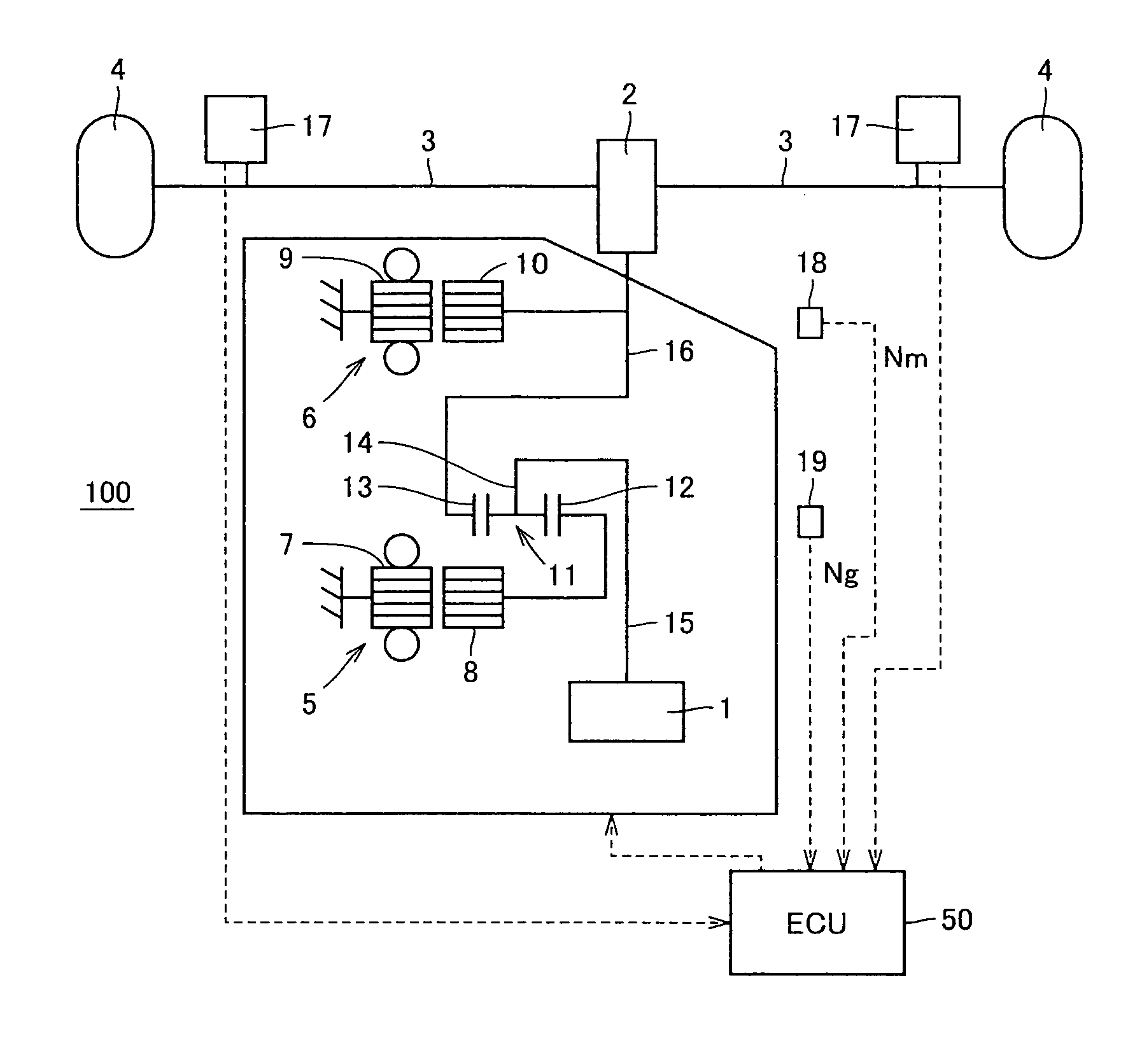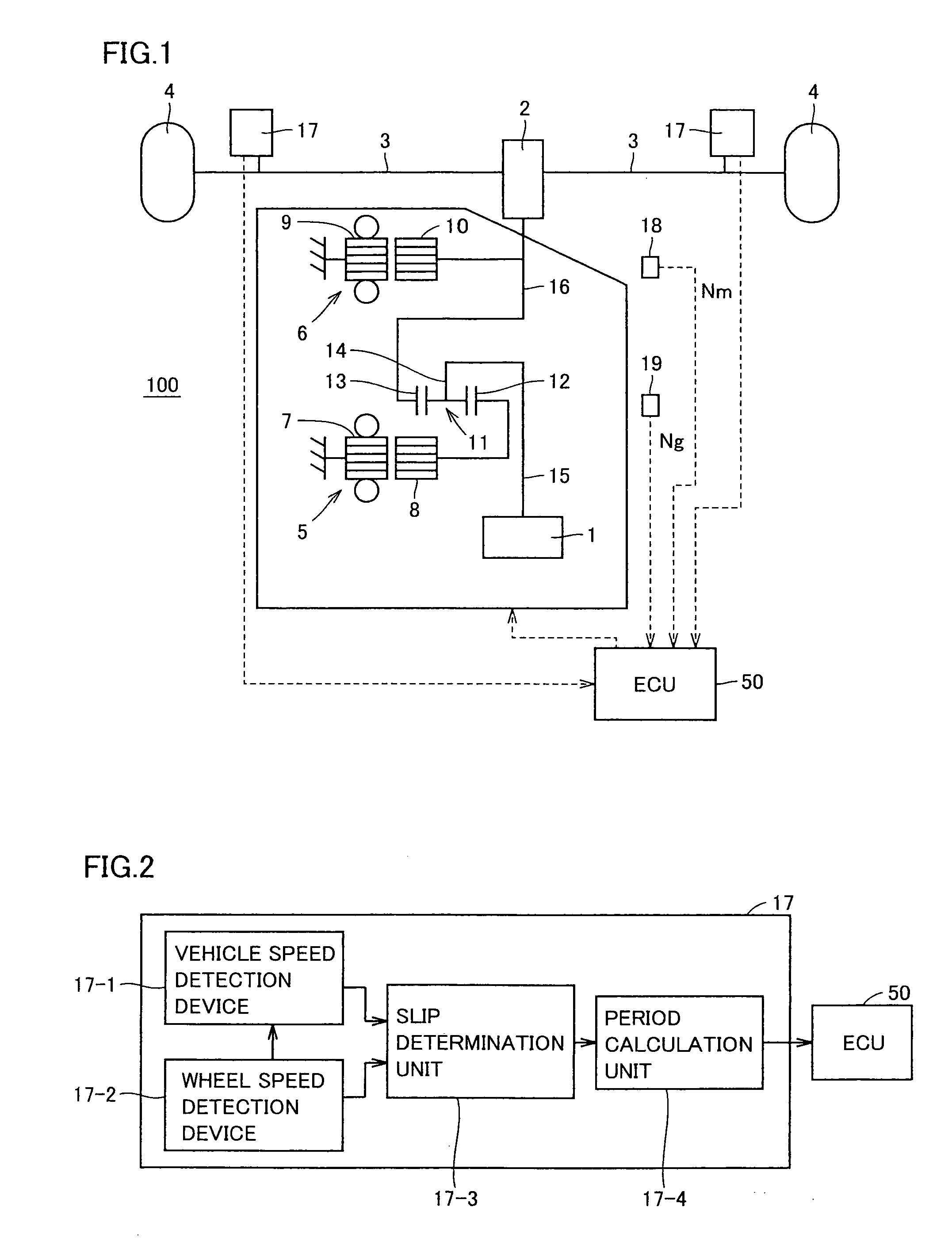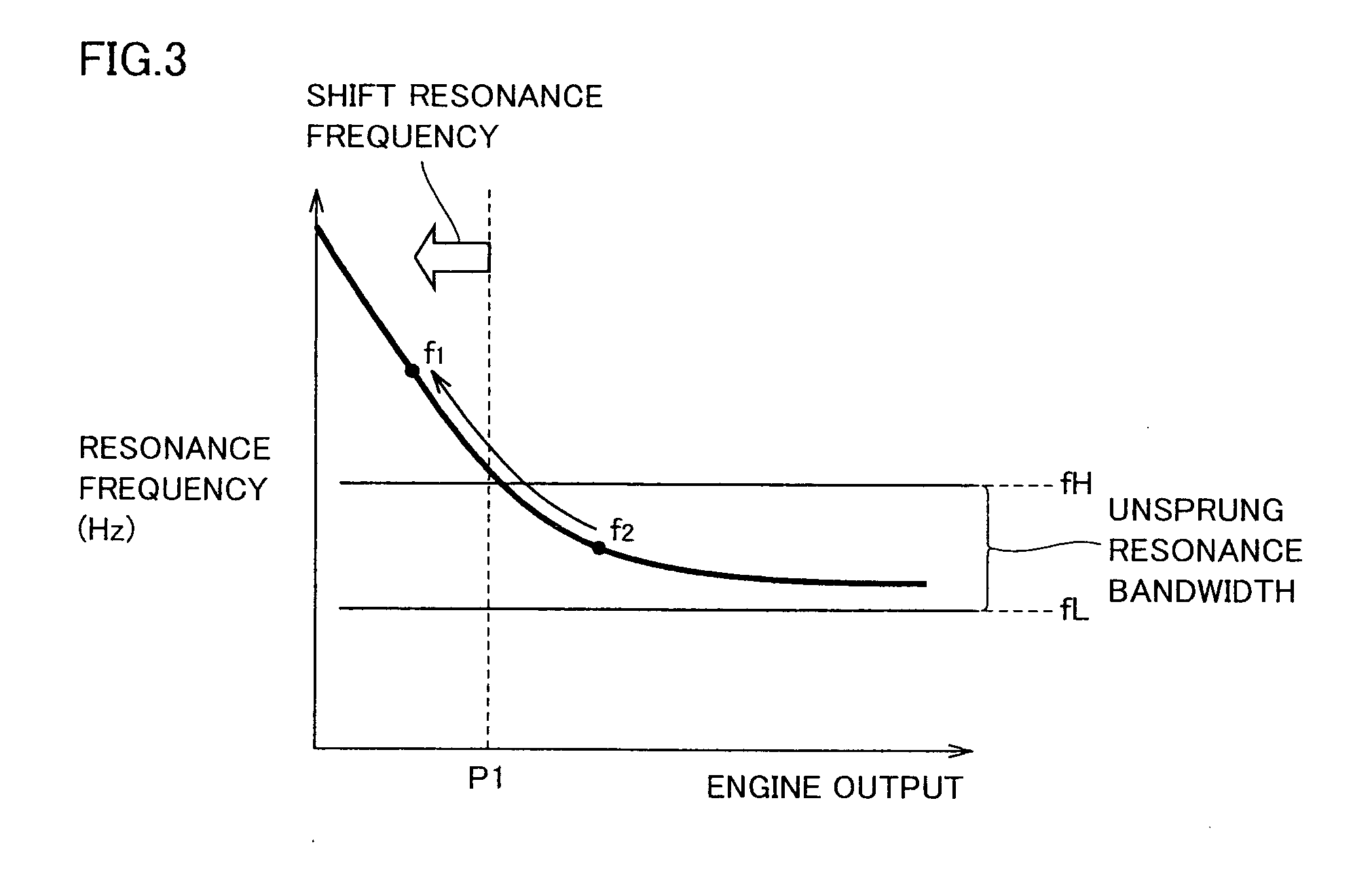Hybrid vehicle
- Summary
- Abstract
- Description
- Claims
- Application Information
AI Technical Summary
Benefits of technology
Problems solved by technology
Method used
Image
Examples
first embodiment
[0028]FIG. 1 is a skeleton diagram schematically representing a powertrain of a vehicle 100.
[0029]Referring to FIG. 1, vehicle 100 includes an engine 1, a first motor generator 5, a power split device 11 splitting the power from engine 1 to first motor generator 5 and a transmission member 16, a second motor generator 6, and an electronic control unit (ECU) 50.
[0030]Engine 1 is the well-known power device such as a gasoline engine or diesel engine that provides power by burning fuel, configured to allow electrical control of the operation state such as the throttle degree of opening (intake amount), the fuel supply amount, ignition timing, and the like. Control of engine 1 is carried out by electronic control unit (ECU) 50 mainly based on a microcomputer, for example.
[0031]A synchronous electric motor, for example, can be used for first motor generator 5. First motor generator 5 is configured to function as an electric motor and as a generator. A battery (not shown) is electrically ...
second embodiment
[0072]In a hybrid vehicle, connection between engine 1 and the driving device is established absent of a fluid coupling or the like. Therefore, when the rotational speed of the wheel suddenly changes such as in the case of harsh braking, parking lock engagement at the time of or moving, parking lock release in a slope stop mode, or change in the friction coefficient of the road, the rotational speed of engine 1 will not follow-up with the change, leading to change in the relative rotational speed of engine 1 to transmission member 16. Further, there is a possibility of excessive torque being added to transmission member 16 by the so-called inertia torque of the engine.
[0073]In order to prevent such excessive increase in torque, the control set forth below will be carried out.
[0074]FIG. 6 is a flowchart of vibration suppress control in a rapid deceleration mode executed in the second embodiment. The process steps in the flowchart are invoked and executed from a predetermined main rou...
third embodiment
[0093]In the first and second embodiments, irregularities of a road surface is detected to reduce the engine output by detecting change in the vehicle state that occurs after the wheel passes over the irregularities of the road. However, generation of unsprung resonance caused by road irregularities can be detected by another method. For example, the road surface can be examined by a non-contact sensor such as an ultrasonic sensor.
[0094]FIG. 10 is a diagram to describe a hybrid vehicle 200 of the third embodiment.
[0095]Hybrid vehicle 200 of FIG. 10 includes, in addition to the configuration of hybrid vehicle 100 described with reference to FIG. 1, an ultrasonic sensor 202 attached at the front side of the vehicle.
[0096]Ultrasonic sensor 202 can identify the irregularities of the road by directing an ultrasonic wave towards the region of the road surface located forward of the vehicle and detecting the reflected ultrasonic wave.
[0097]FIG. 9 is a flowchart of the vibration suppress co...
PUM
 Login to View More
Login to View More Abstract
Description
Claims
Application Information
 Login to View More
Login to View More - R&D
- Intellectual Property
- Life Sciences
- Materials
- Tech Scout
- Unparalleled Data Quality
- Higher Quality Content
- 60% Fewer Hallucinations
Browse by: Latest US Patents, China's latest patents, Technical Efficacy Thesaurus, Application Domain, Technology Topic, Popular Technical Reports.
© 2025 PatSnap. All rights reserved.Legal|Privacy policy|Modern Slavery Act Transparency Statement|Sitemap|About US| Contact US: help@patsnap.com



